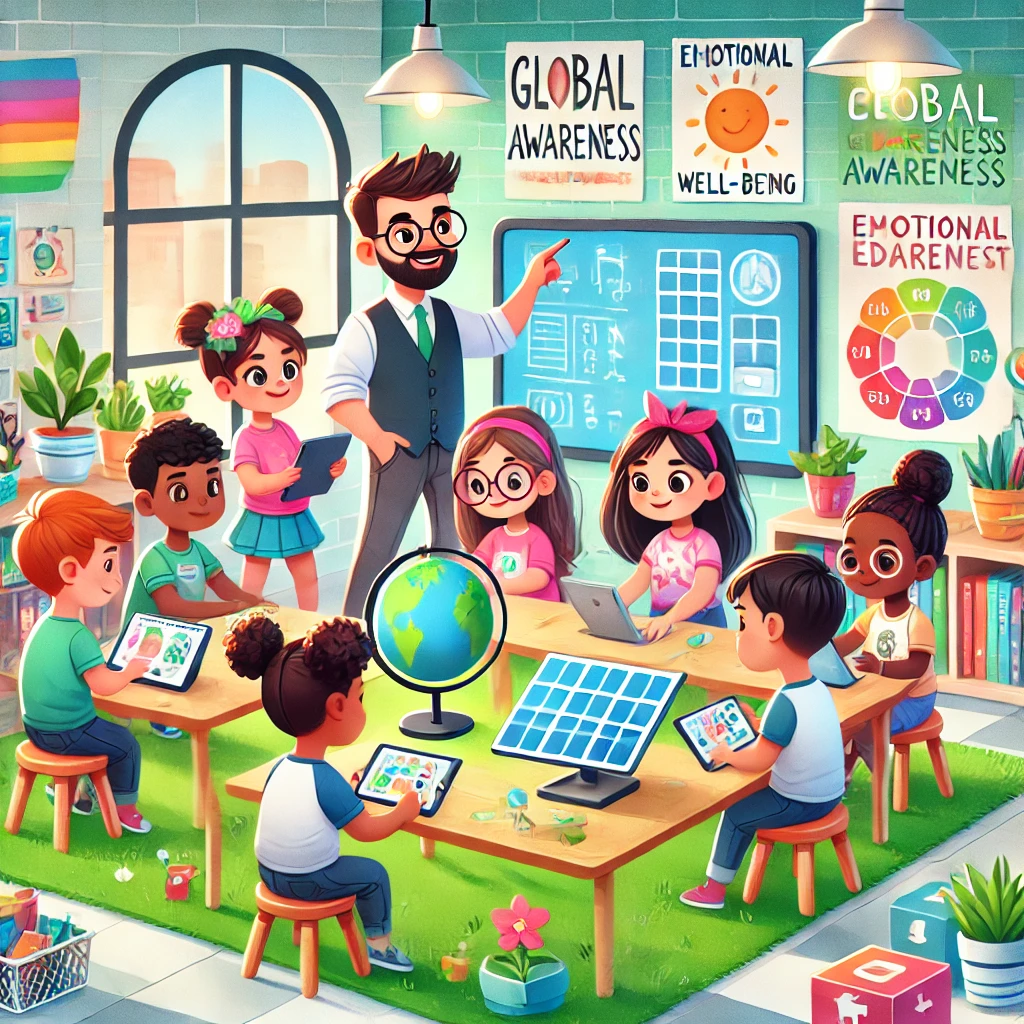
The Future of Children's Education: Trends and Innovations in 2024
Table of Contents
ToggleTechnology has become an indispensable part of children’s education. Interactive learning platforms, AI-driven tools, and virtual classrooms are making education more accessible and tailored to individual student needs. Platforms like adaptive learning apps use artificial intelligence to analyze a child’s strengths and weaknesses, providing customized lessons to enhance their progress.
In addition, gamification has gained momentum as a way to make learning enjoyable and interactive. Subjects like math, science, and languages are being taught through engaging games, fostering both academic understanding and critical thinking.
Recognizing the importance of emotional intelligence, schools worldwide are integrating social-emotional learning (SEL) into their curricula. SEL programs teach children skills such as empathy, self-awareness, and conflict resolution, equipping them to navigate complex interpersonal situations.
Moreover, mental health support systems are being strengthened in schools, with counselors and psychologists becoming essential members of educational institutions. These efforts aim to create a safe and supportive environment for students to thrive academically and emotionally.
Education is increasingly geared toward creating responsible global citizens. Schools are introducing topics related to climate change, sustainability, and environmental science to raise awareness among students. Practical initiatives, such as eco-friendly school projects and community clean-up drives, are being encouraged to instill a sense of responsibility toward the planet.
This shift aligns with the global call for education to address pressing environmental challenges while nurturing a generation that values sustainability.
Inclusivity remains a critical focus in modern education. Efforts to accommodate children with diverse needs, including those with disabilities or from marginalized communities, are gaining momentum. Schools are adopting assistive technologies, hiring specialized educators, and implementing policies to ensure equal opportunities for all students.
Virtual learning has also helped bridge geographical and economic barriers, enabling children in remote or underserved areas to access quality education.
The one-size-fits-all approach to education is being replaced by personalized learning models that cater to individual learning styles and paces. Competency-based education focuses on mastery of skills rather than time spent in the classroom, allowing students to progress as they demonstrate their understanding.
This shift empowers children to take ownership of their learning journeys while enabling educators to address specific needs effectively.
Parents and communities play a pivotal role in children’s education. Schools are fostering partnerships with families through regular workshops, events, and communication channels. These efforts ensure that parents are well-equipped to support their children’s learning and development at home.
Community involvement through mentorship programs, volunteer teaching, and local projects also enriches the educational experience by connecting students with real-world perspectives.
Children’s education in 2024 is marked by innovation, inclusivity, and a strong emphasis on holistic development. By leveraging technology, prioritizing mental health, and embracing sustainability, educational systems are preparing children to excel academically while becoming responsible, empathetic, and globally aware individuals. As these trends continue to shape the future, the ultimate goal remains clear: to provide every child with the tools and opportunities to succeed in an ever-changing world.